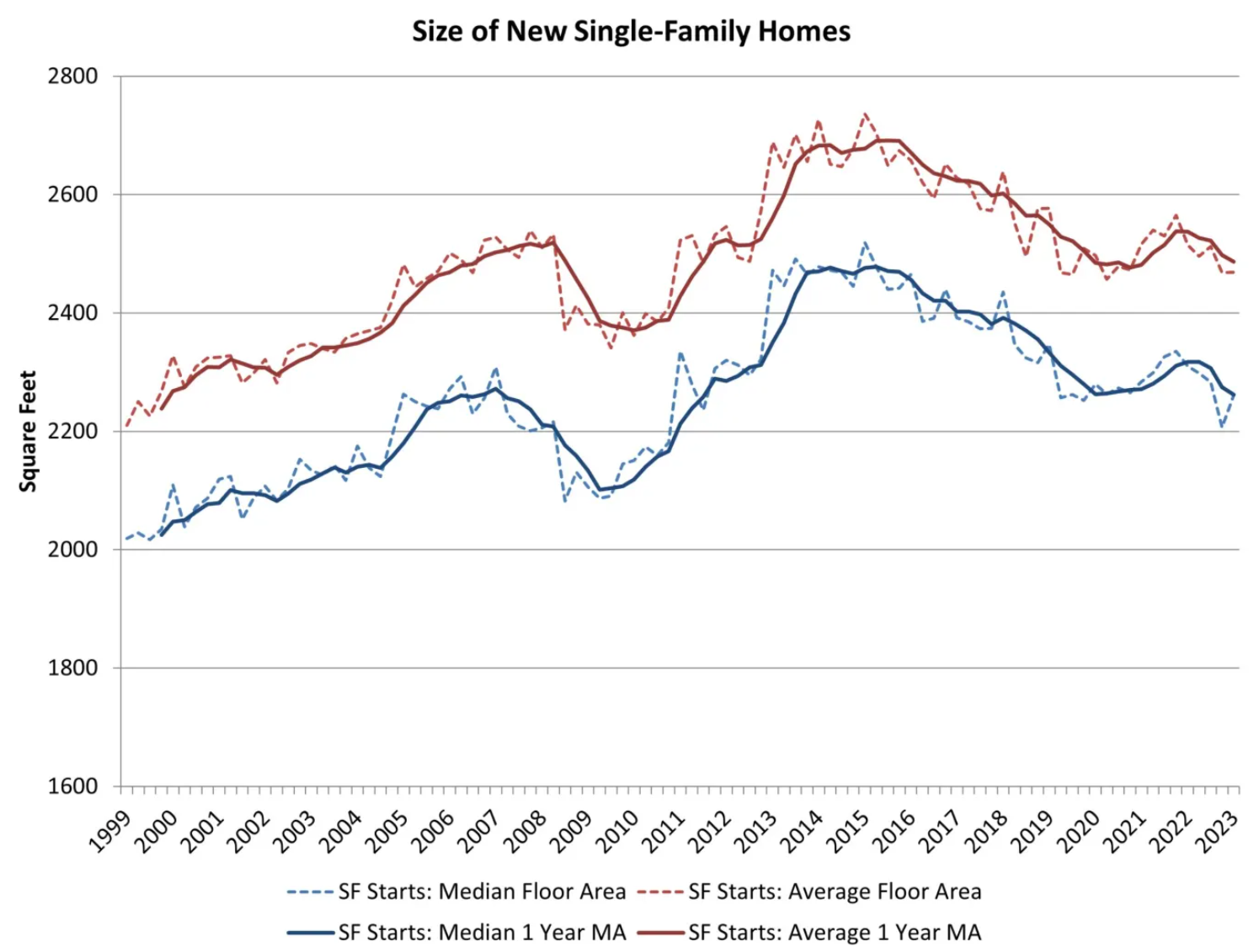Single-Family Home Size Continues Downward
Originally Published by: NAHB — May 22, 2023
SBCA appreciates your input; please email us if you have any comments or corrections to this article.
An expected impact of the virus crisis is a need for more residential space, as people use homes for more purposes including work. Home size correspondingly increased in 2021 as interest rates reached historic lows. However, as interest rates increased in 2022, and housing affordability worsened, the demand for home size has trended lower.
According to first quarter 2023 data from the Census Quarterly Starts and Completions by Purpose and Design and NAHB analysis, median single-family square floor area registered at 2,261 square feet. Average (mean) square footage for new single-family homes stood at 2,469 square feet.

Since Great Recession lows (and on a one-year moving average basis), the average size of a new single-family home is now 4% higher at 2,486 square feet, while the median size is 7% higher at 2,262 square feet.
Home size rose from 2009 to 2015 as entry-level new construction lost market share. Home size declined between 2016 and 2020 as more starter homes were developed. After a brief increase during the post-covid building boom, home size is trending lower and will likely do so as housing affordability remains constrained.
